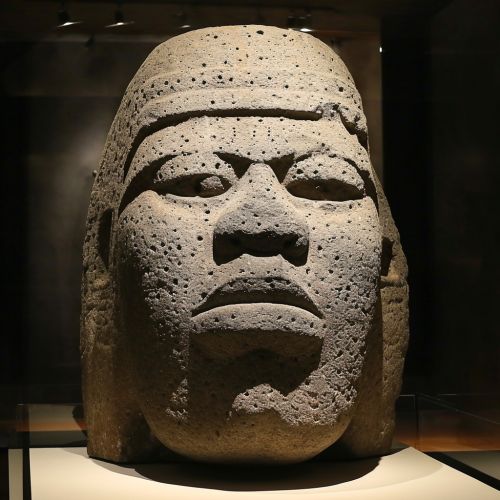Mesoamerican chronology
Preclassic Period
The Preclassic period (2000 BCE – 250 CE) is the first major era in Mesoamerican chronology, marked by the development of the first complex societies in the region. It is divided into three phases: Early, Middle, and Late Preclassic.
Early Preclassic (2000 BCE – 1000 BCE)
The Early Preclassic period saw the rise of the first sedentary communities and the development of pottery. The Olmec civilization, considered the "mother culture" of Mesoamerica, emerged during this time in the tropical lowlands of south-central Mexico. The Olmecs are known for their colossal head sculptures and complex social and political structures.

Middle Preclassic (1000 BCE – 400 BCE)
During the Middle Preclassic period, the Olmec civilization reached its peak, influencing other regional cultures. The Zapotec civilization began to emerge in the Oaxaca Valley, developing the first writing system in Mesoamerica.
Late Preclassic (400 BCE – 250 CE)
The Late Preclassic period was characterized by increased urbanization and the rise of state-level societies. The Maya civilization began to develop in the lowlands of Guatemala, while the Zapotec civilization flourished in the highlands of Oaxaca. The Teotihuacan city-state emerged in the Valley of Mexico, becoming one of the largest cities in the ancient world.
Classic Period
The Classic period (250 CE – 900 CE) is often considered the "golden age" of Mesoamerican civilization, marked by the peak and decline of the major regional cultures.
Early Classic (250 CE – 600 CE)
The Early Classic period saw the rise of Teotihuacan as the dominant power in Mesoamerica. The city's influence is evident in the architecture and iconography of contemporary Maya city-states. The Maya civilization also experienced a period of rapid growth and expansion during this time.
Late Classic (600 CE – 900 CE)
The Late Classic period was characterized by the decline of Teotihuacan and the subsequent power vacuum in the region. The Maya civilization, however, reached its peak, known as the Maya Classic Period, characterized by the construction of monumental architecture, the development of a complex hieroglyphic writing system, and the proliferation of city-states.
Postclassic Period
The Postclassic period (900 CE – 1521 CE) marked the decline of the major Classic period civilizations and the rise of militaristic societies. It is divided into Early and Late Postclassic periods.
Early Postclassic (900 CE – 1200 CE)
The Early Postclassic period was characterized by the decline of the Maya civilization and the rise of the Toltec civilization in central Mexico. The Toltecs are known for their militaristic society and their influence on later cultures, particularly the Aztecs.
Late Postclassic (1200 CE – 1521 CE)
The Late Postclassic period saw the rise of the Aztec civilization in the Valley of Mexico. The Aztecs built the city of Tenochtitlan, which became one of the largest cities in the world. The period ended with the Spanish conquest of the Aztec Empire in 1521 CE.
